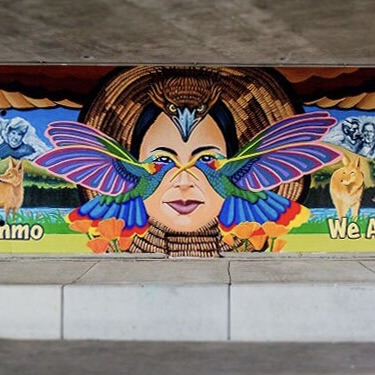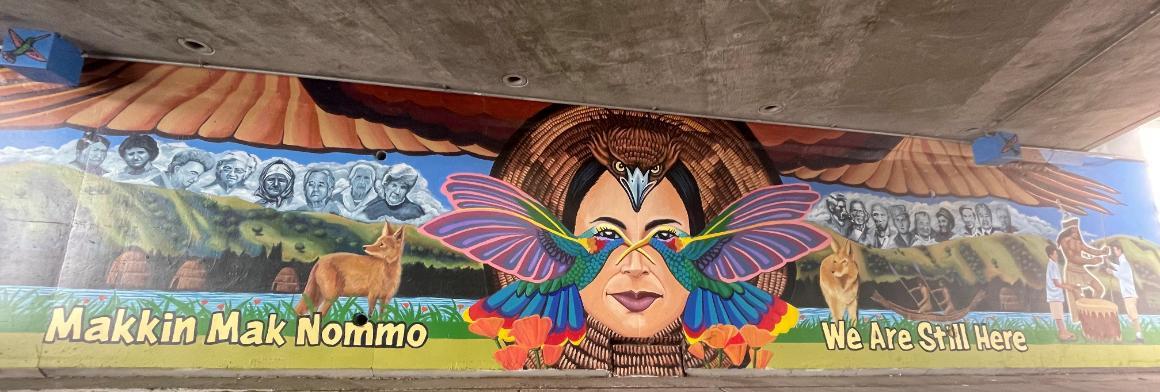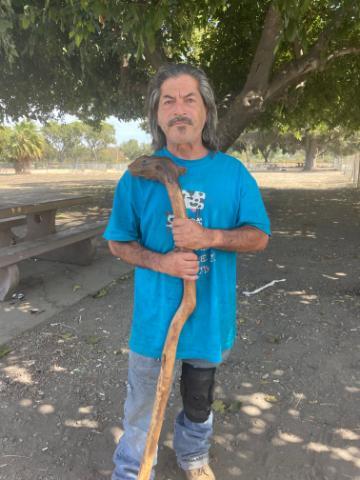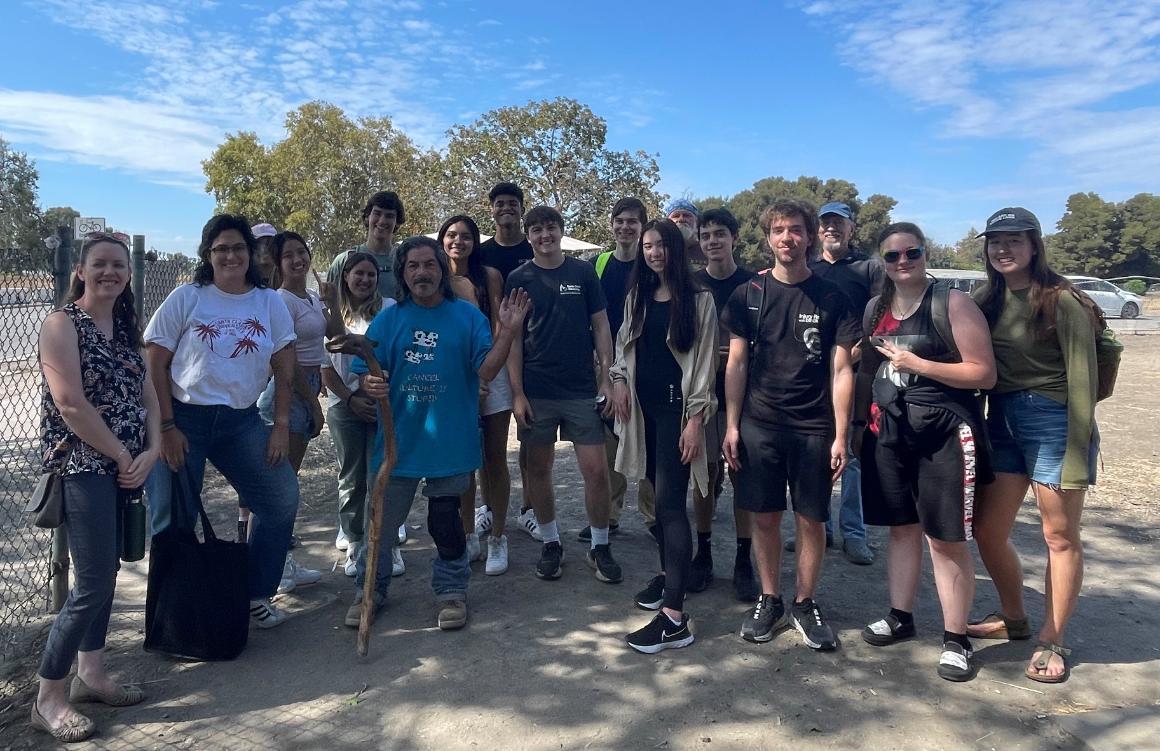
We Are Still Here

We Are Still Here.
Four bold words outlined in black painted as part of a mural on one side of the Guadalupe River Trail. On the other: “Makkin Mak Nommo '' – the same message in the language of the Muwekma Ohlone people. It’s ironic that such a powerful statement, WE ARE STILL HERE is located under a bridge. However, the mural’s proximity to a bridge seemed deliberately chosen since bridges function to enable pedestrians and vehicles to travel from one side to the other. Bridges connect across divisions, whether it is a river, a highway, or other obstacles that otherwise keep places and people divided. Such a setting was the perfect place to start the San Jose Immersion, as it served as a bridge for Santa Clara University first-year students to cross the barriers between themselves and those who experience houselessness.
Offered yearly by SCU’s Ignatian Center to incoming first-year students, the San Jose Immersion allows students to move into their dorm room a week before fall quarter classes begin, giving them the opportunity to meet new friends and create connections. More importantly, it provides incoming students with a chance to immerse in solidarity alongside San Jose’s houseless community.

Steve, resident of the Guadalupe River Park encampment
Students gain an invaluable perspective that enables them to recognize the inequalities and unjust marginalization of a vast population of people living in their new neighborhood. Students participants met with SCU peers, staff, and faculty, including Religious Studies professor Boo Riley, with whom they visited the Guadalupe River Park encampment. While in the encampment, students were joined by a short, stocky man clutching a serpentine, wooden cane who jauntily sauntered up to the group. Introducing himself as one of the many residents living there, he informed them, “the police call me Steve.” This colorful character continued to captivate the first-year students as he explained, “There is no such thing as homelessness because the earth is our home.” Showing off his puppy as if he was revealing his prized possession, clearly empathetic and determined to provide love for all living things, he left the group with a message: "Don't forget, God loves you, and I, Steve, love you."
Every evening during the Immersion, students were given time to reflect on their day and the experience so far. At the final reflection meeting, Josh, an 18-year-old freshman from Los Angeles, California explained his perception of the houseless community before joining the SJ Immersion:
“Being from Los Angeles, I’ve worked at soup kitchens and food banks a little bit before, but for the most part it was a lot of facelessness and invisibility.”
But now, nothing could be farther from the truth. The light in the eyes of human beings such as Steve, deemed outcasts and misfits by the rest of society, changed the students’ perspectives. It made them realize that accompaniment coming from a place of equality instead of privilege can make much more of a difference. Josh explained his new perspective:
“Seeing all the organizations that exist and all the people that are working to help this issue - from feeding people in need of a meal, or helping people find clothes at the donation center - I realized how big the issue was. There are so many smart people making huge efforts to provide resources. Obviously, it is not enough but it was really cool to be a part of all that and get to connect on a personal level with people experiencing houselessness or food insecurity.”
Andrew, another freshman participant and Bay Area native, reflected on his experience:
“The only difference between someone who didn’t have a house and me, was that I could have some pretense, some delusion, that I had control over my life. Whereas someone who is literally living on the streets does not have that option. And so, I did see their humanity as somewhat foreign.”
Nonetheless, Andrew immersed himself in the experience as did all the other first-years as they acknowledged that privilege they had, compared to those who lacked it. When asked what his one takeaway was from the immersion, he selected his next words carefully, almost as if he had been pondering them for the entirety of the trip. He remarked:
“It impressed how small I am because it had shown me that my conception of the world was based on a very limited experience of it.”
Students discussed how barriers have existed for centuries to keep “othering” those deemed by society as an outgroup because of their perceived threat to humanity. They learned that the practice of discrimination and oppression are a few tactics used to keep barriers enforced and to keep marginalized communities silenced and invisible.
Understanding the language of an oppressed people is an example of just one of the ways that society can dismantle privilege and give a voice to those who have no visibility. The San Jose First Year Immersion created an opportunity for students to humanize houseless individuals just by being present and listening to the stories of the “other.” Although one cannot fathom another’s life until walking a mile in their shoes, one can learn to be the bridge to another and to understand that human beings are just reflections of each other.
Makkin Mak Nommo

Steve, resident of the Guadalupe River Park encampment